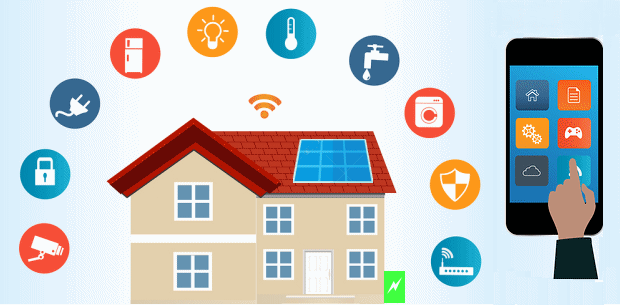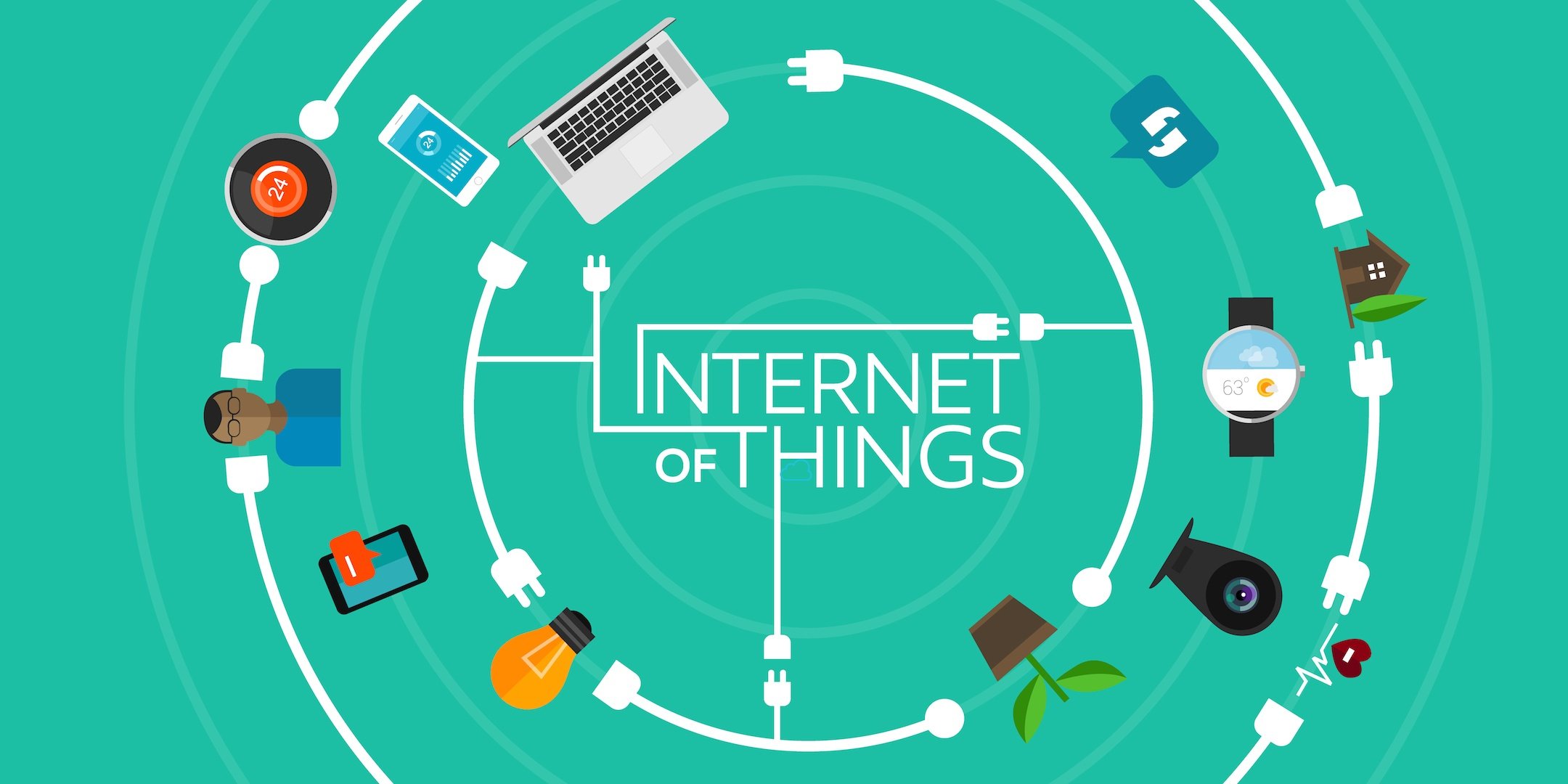Security of Voice Assistants
Lately, our life has been bombarded with voice assistants; they are becoming popular with making our lives easier and convenient. But the question...


In today's world smart home technology is increasing the craze of automated devices which can regulate the functions generally requiring humanitarian aid. Smart home technology is also denoted as home automation or domotics. This has turned out from the Latin word Domus which means home. This has opened up the gate for new addition of opportunities for both consumers and developmental industries. This provides security, comfort, convenience and energy efficiency by allowing better control and empowering smart devices mostly operated by the smart home app on their smartphone or single-handed network device.
Internet of Things, on the other hand, is changing everything from logistics to healthcare. No industry in today's world of modernization and information technology is untouched by it. This is making our lives easier, comfortable and less complex. All these things are possible through the transmission of information which otherwise would have been lost in the data form. Gone were the days when processing these data files would take endless time and automatically converted action as a distant vision, but thankfully, Internet of Things has not only managed to make it possible but popularize it as well.
Another part of IoT which is uplifting the technological updates on devices that garner data to work upon it is smart home apps. This sharing of customer usage data is beyond the reach of humans is done in the simplest way. This has automated and revolutionaries the way we are looking at our homes, offices, workplace like never before. And the beauty of this is all the actions are typically based on the homemaker's own decisions and preferences. Before digging deep into the information about how automation homes are being empowered by IoT devices. Let us look at the origin of smart homes.
Along with the release of X10, a communication protocol for automation home, the smart home actually framed automation home and development comes into the picture, X10 was able to send 120 kHz radio frequency burst into the digital transformation onto the home existing through the electric wiring which are programmable units. This is followed by the electrical wiring and the signals which are conveyable and is command responding too. This can be understood through the example of the home system which transmits the commands into specific actions. But the problem is that the wiring system is unable to do noise cancellations as it is wiring based and command transmitting may have issues. Signals may be lost and in cases cross-connection and circuit interconnectivity occur it interfere with the result. When 220-volt service is used the technology becomes one-way transmitting. This whole system of networking starts working into the central computers. Initially, failure was also contributed by the higher cost and low management.
The new era started when another home automation company Insteon comes into the picture in 2004; this introduces the single-handed electric wiring devices that work. This opens the gate for other ventures like Zigbee and Z-Wave which have continued to emerge as a serious introducer.
In 2010 Nest Labs also released its first smart product. This product has been named as the thermostat in 2011. The company was focused at that time to find smoke or carbon monoxide detector. Security cameras were also introduced in a similar background. Another product then was launched named alphabet inc. in the same year.
In 2012 SmartThings inc. launched other projects known by the name of Kick starter which was able to raise an investment of 1.2 million U.S dollar. This has led to the company being founded in 2014.
More recently smart homes have been addressed by Amazon Alexa, Siri and Google Assistant releasing more products that are focusing to gain the profit in the market of smart homes.
Smart homes include every domestic space be it lights, dishwasher, air conditioner and so on. Smart homes work on the basis of the internet that has access to the content and commands of the home and its application including music system. Examples are the smart television that works on gesture, voice and visual reorganization. Recently Phillips has introduced the customized smart lighting system that can detect whether the owner is at home or not and switches on and off the light as per the needs. Not only the sensors but this information can be controlled through smart devices like phones, tablets, etc.
Addition of the thermostatically- controlled devices like nest labs commanded with pre-connected Wi-if connection allows scheduling and monitoring the home temperatures within the household system possible. This not only provides comfort to the owner but has power to change the attitude of individual to conserve energy at the ease of a click. Now IoT devices have also automated the field of pet care and not to forget the automatic sprinklers in the gardens of houses which can water the plants in a timely manner. In short from smart refrigerators to coffee machine our houses are becoming self-driven and controlled by the commands as given by the owners. Coffee making machine that can make your favorite cup of coffee, a washing machine that can work automatically, systems that can make our grocery shopping list everything is becoming possible and the credit goes to IoT devices. We can say that IoT is changing the outlook of houses like it has changed many business modules.
A smart automated device works on the basis of the infrastructure of the house. They are often created right at the construction level. Older homes can be converted to smart homes but are costlier and difficult on the other hand pre-fitted smart homes are easy and embedded with much better features. Most of the smart homes are still running on the Bluetooth connecting devices and X10 or Insteon. This one has recently gained popularity as it comes in the most pocket-friendly way. In 2018 Zigbee has become the most commonly used protocol that was being used in the home automation communication system. On the other hand when we compare this with mesh network it is short-range, has a lower frequency and has issues with radio signals. The range may vary from three-meter to ten meters. A smart home basically works on the basis of coordination between inter as well intra-device system. It works with thousands of other small or large devices to create remote-controlled network system which works on pre-decided preferences. Most often devices within the smart home are controlled by the master home automation controller which is often known as smart home hub. This is the hardware device that coordinates with the central point system that is able to sense, process the data and then act on the data that too wire-free. This can be very well understood through latest introduction of Google Homes, Amazon Dot. Amazon Echo, Insteon Pro and wink.
Some of the smart homes can be easily prepared like using Raspberry Pi or the prototyping which is much cheaper and simpler whereas some may be complex and require bulk assembly like the smart home kit. They are mostly time taking and have small packets of information. Most often working of the module is based on the time management like triggering an action in the given time frame. Like if your house is automated with lights it should manage to open the lights as soon as the owner's smart device approaches the time. So judgment needs to be maintained by making one aspect of the time incompetent like the lights need to switch on at 8.00 p.m but if the smart device doesn't approach the house it should not.
So one command should be able to mask the working of another command in the given frame of time. This is usually required whenever or wherever.
Not only the ease of modulating and controlling your own home in the comfort of your selected device, Internet of Things can be beneficial in conserving as much energy as possible through these technological efforts. If a recent survey is to be believed, United States of America was able to conserve energy and reduce household consumption by 20% just by introduction of smart homes and sensors. These sensors allow automatic adaption of pressure, temperature hence your AC might not over-cool and use less electricity in turn. On the other hand in your office, your automated system can detect your absence and switch off the lights, again conserving the electricity till the time someone switches it off manually.
Maintenance also become quite easy with the introduction of smart home like generators can be switched on automatically when power supply cuts off. This can also work with pre-received data patterns and automatically switches itself if allowed to.
Have an amazing idea for an IoT implementation? Get in touch and ask how we've helped our clients with IoT solutions before

Lately, our life has been bombarded with voice assistants; they are becoming popular with making our lives easier and convenient. But the question...

1 min read
The working environment is changing and so is the strategies and how things are conducted within and outside the organizations. Trends are flooding...

The Internet of Things (IoT) has become the centre of discussion for many businesses. Today, every business needs more control on data. Nevertheless,...